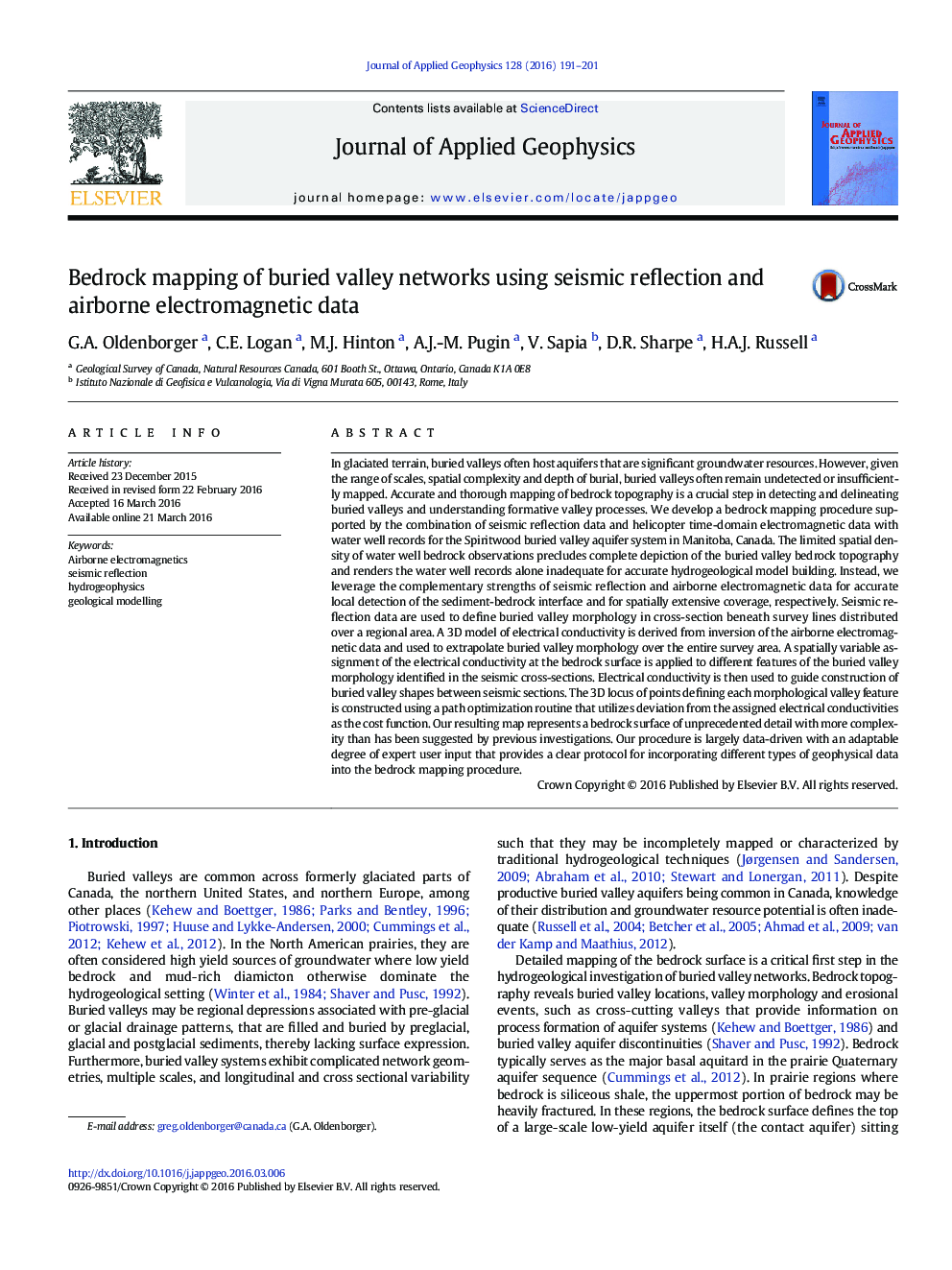| کد مقاله | کد نشریه | سال انتشار | مقاله انگلیسی | نسخه تمام متن |
|---|---|---|---|---|
| 4739798 | 1641123 | 2016 | 11 صفحه PDF | دانلود رایگان |
• Airborne electromagnetic (AEM) and seismic surveys for imaging buried valley networks
• Novel integration of seismic, AEM and geological data for mapping bedrock topography
• Delineation and extrapolation of buried valley morphology using path optimization
• Bedrock topography model for Spiritwood buried valley aquifer, Manitoba, Canada
In glaciated terrain, buried valleys often host aquifers that are significant groundwater resources. However, given the range of scales, spatial complexity and depth of burial, buried valleys often remain undetected or insufficiently mapped. Accurate and thorough mapping of bedrock topography is a crucial step in detecting and delineating buried valleys and understanding formative valley processes. We develop a bedrock mapping procedure supported by the combination of seismic reflection data and helicopter time-domain electromagnetic data with water well records for the Spiritwood buried valley aquifer system in Manitoba, Canada. The limited spatial density of water well bedrock observations precludes complete depiction of the buried valley bedrock topography and renders the water well records alone inadequate for accurate hydrogeological model building. Instead, we leverage the complementary strengths of seismic reflection and airborne electromagnetic data for accurate local detection of the sediment-bedrock interface and for spatially extensive coverage, respectively. Seismic reflection data are used to define buried valley morphology in cross-section beneath survey lines distributed over a regional area. A 3D model of electrical conductivity is derived from inversion of the airborne electromagnetic data and used to extrapolate buried valley morphology over the entire survey area. A spatially variable assignment of the electrical conductivity at the bedrock surface is applied to different features of the buried valley morphology identified in the seismic cross-sections. Electrical conductivity is then used to guide construction of buried valley shapes between seismic sections. The 3D locus of points defining each morphological valley feature is constructed using a path optimization routine that utilizes deviation from the assigned electrical conductivities as the cost function. Our resulting map represents a bedrock surface of unprecedented detail with more complexity than has been suggested by previous investigations. Our procedure is largely data-driven with an adaptable degree of expert user input that provides a clear protocol for incorporating different types of geophysical data into the bedrock mapping procedure.
Figure optionsDownload as PowerPoint slide
Journal: Journal of Applied Geophysics - Volume 128, May 2016, Pages 191–201
